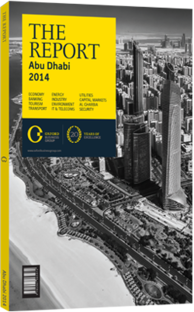OBG talks to Mohammed Al Qemzi, CEO, ZonesCorp

Interview: Mohammed Al Qemzi
Will the increasing selection of industrial zones in the GCC impact the performance of existing zones?
MOHAMMED AL QEMZI: A systematic approach is required by all GCC countries to ensure their industrial zones accommodate the long-term needs of the manufacturing sector. There are many lessons to be learned from the fits and starts of industrial zones around the world over the past few decades. Any investments into new industrial zones should be assessed for their compatibility with pre-existing entities and consider the potential for knock-on effects on the broader economy. An approach that strives for compatibility among industrial zones will enable specifically dedicated industries to complement each other and achieve an optimal impact on the manufacturing sector overall. The establishment of supporting infrastructure, such as transport links, in the surrounding areas can further enhance connectivity and value, and mitigate against any risk of depreciation in pre-existing zones.
What types of initiatives can industrial projects focus on to spur the formation of clusters?
AL QEMZI: Increased government spending on development and capital projects will yield the establishment of more industrial cities, such as Al Ruwais and Madinat Zayed. The expansion of dedicated industrial zones in Abu Dhabi, such as an integrated automobile city in ICAD V, will provide further opportunity for cluster formation. Initiatives to facilitate foreign investment into manufacturing clusters are also in place. Coordination between industrial zones and state entities, such as the Abu Dhabi Department of Economic Development, will simplify the process of obtaining industrial licences, improving the ease of entrance for investors and minimising the time required to move into the operational phase. Streamlining basic processes, such as the acquisition of land and the overall transparency of incentives, will be another pull factor. With greater cooperation among government departments, zones will now enhance their value proposition to light industries associated with logistics and other downstream services. Improved commercial linkages to areas such as Khalifa Port will result in a trade portal that caters to businesses of all backgrounds. Furthermore, the support of small and medium-sized enterprise (SME) industrial projects in the form of reduced rent and consultative services aims to foster a greater sense of accountability and responsibility. That said, industrial parks in Abu Dhabi still place emphasis on infrastructure development, rather than focusing on incentives. Prudence is essential, as over-incentivised and unregulated parks can potentially begin to operate completely outside the national economy, which would eventually be counterproductive to the emirate’s growth.
How integral is finance availability to the development and growth of SMEs within industrial zones?
AL QEMZI: We hope that private sector capital inflows will be the driving force behind industrial expansion in Abu Dhabi going forward. In the past, many SMEs were not able to command the same degree of attention that major industrialists were receiving, which is clearly not sustainable, but this is beginning to change. This is key as SME development in the UAE will form the backbone of the nation’s economy. SMEs are set to contribute a significant amount toward the national GDP and workforce, and their full growth potential has still to be realised. With the clustering model promoting the development of SMEs in downstream services, what remains to be overcome is the financing challenge.
Financial institutions are starting to improve funding and financing efforts towards manufacturing, particularly in accommodating the needs of SMEs. Foreign banks have expressed interest in helping propel industrial activity in Abu Dhabi to the next level, and we believe local banks will continue to follow suit. This culture must evolve to encourage financial institutions to capture a larger percentage of industrial projects. The biggest barrier to overcome is the fact that these types of loans may be longer in term and lower in return.
You have reached the limit of premium articles you can view for free.
Choose from the options below to purchase print or digital editions of our Reports. You can also purchase a website subscription giving you unlimited access to all of our Reports online for 12 months.
If you have already purchased this Report or have a website subscription, please login to continue.

